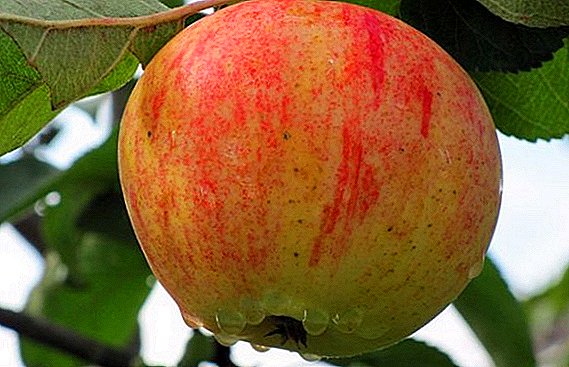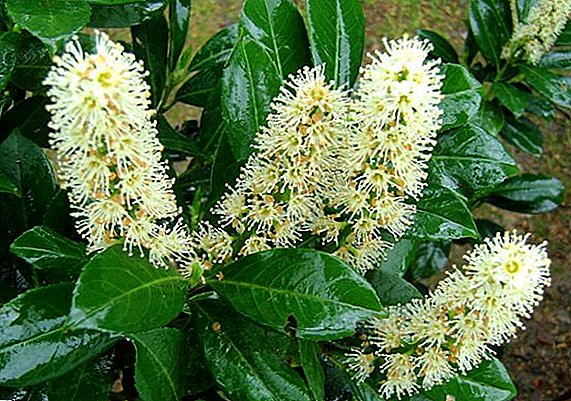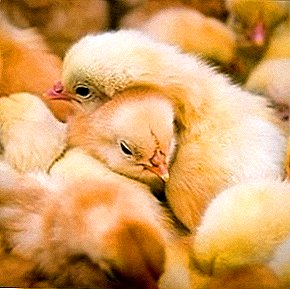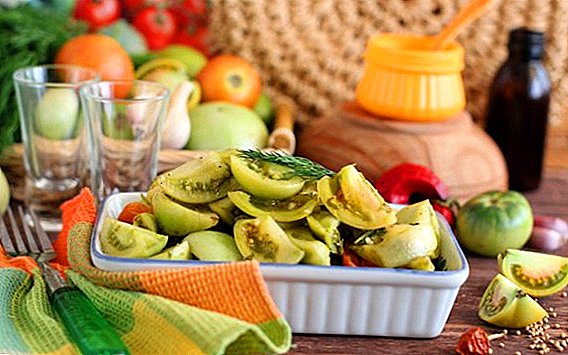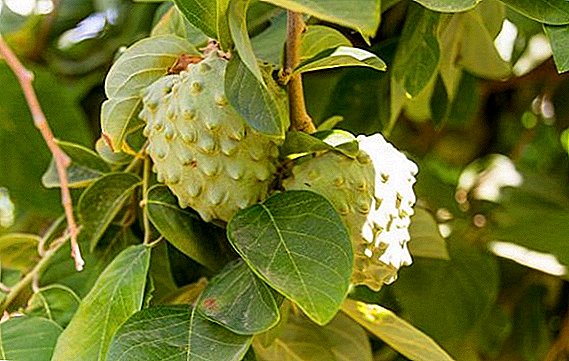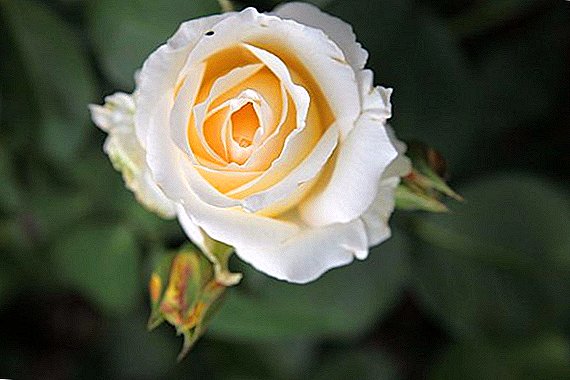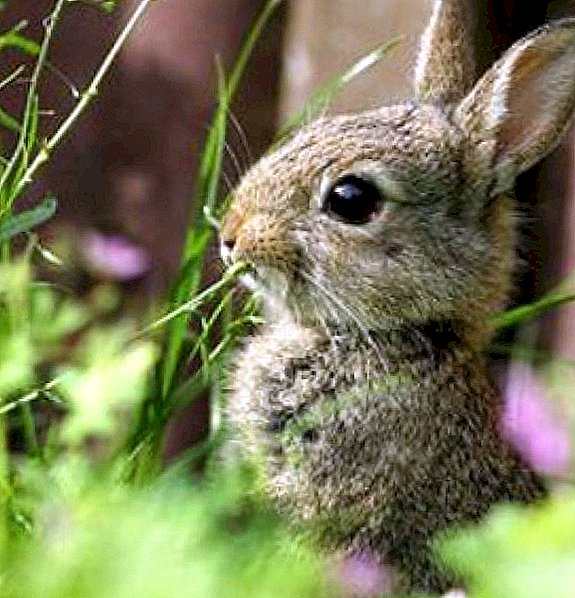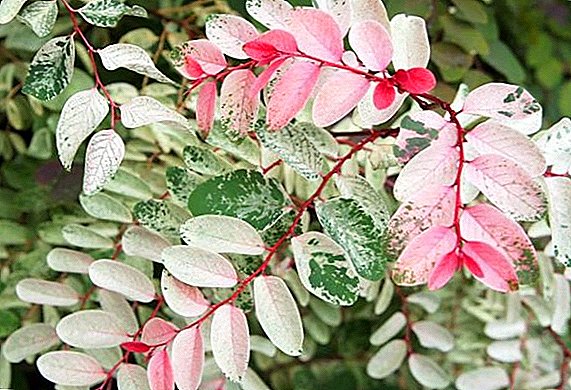 Braynia - a high decorative leafy plant native to the tropics. Until recently, the culture was cultivated only in gardens and greenhouses, but a couple of decades ago it was decided to domesticate it. Recommendations from this article will help you to easily find the approach to this flower.
Braynia - a high decorative leafy plant native to the tropics. Until recently, the culture was cultivated only in gardens and greenhouses, but a couple of decades ago it was decided to domesticate it. Recommendations from this article will help you to easily find the approach to this flower.
Botanical description of indoor plants
Braynia (Breynia) is a perennial evergreen subshrub belonging to the family Euphorbia, subfamily Filantovy.
It can reach quite impressive dimensions - about 2 m in height. But if desired, its growth can be limited by achieving a miniature neat bush with a lush crown.
As a home flower is cultivated mainly Brainy snow (Breynia nivosa). She received such name thanks to white spots on green foliage. The pattern on the leaves resembles patterns on marble.

Brainya foliage has stunning beauty. At the base of the tree, the color is often monophonic, and in the center and in the upper part of the crown green color with white markings prevails. Sometimes there is a completely snow-white tip. The leaf is smooth, glossy, ovoid in shape, with a characteristic slight bend from the main vein. The leaves are small - up to 5 cm in length and 2.5 cm in diameter.
The stem is erect, has a high tillering ability. As the young shoots grow, they are stiffened, from the green color they are repainted into brick.
Perennial blooms in August, giving small light green paniculate inflorescences. Strangely enough, the flowering does not give a decorativeness to the plant - against the background of a spectacular crown, which is the main decoration of the brainya, its flowers look inconspicuous. However, they attract with their strong pleasant aroma, similar to the smell of jasmine.
Did you know? The fastest growing plant on earth is bamboo. It increases its height by 0.75-0.9 m per day.
Conditions for growing at home
Growing brainy in the conditions of the room is quite simple. Difficulties can occur only with the formation.
Location and lighting
The best place in the apartment for the maintenance of brainya are windows of the southern direction. It is also adapted to the windows facing west or east. However, the windows of the northern direction of the culture may not have enough light for normal development.
During the day, the flower requires intense lighting. If the light is lacking, it will affect the appearance of the plant - the pattern on the leaves will become dull and unattractive. But the sun's rays must be scattered. In order to prevent burns on the foliage, in the summer heat the flower is better to move to a shaded place.

Air temperature and humidity
From the beginning of spring to the end of summer, the brainya prefers to grow in heat: the average temperature should be + 22 ... +25 ° С. In the remaining months, perennials should be provided with cool conditions - approximately + 15 ... +16 ° C.
The flower is not easy to winter in a room with dry air - moisture-loving braynia feels a constant need for spraying and high humidity. If it is not possible to frequently spray the plant, it is necessary to place it on a pallet with wet expanded clay.
Home care
Considered a flower of tropical origin can be attributed to unpretentious. Nevertheless, a number of rules in its cultivation is still worth observing.
Did you know? The oldest plants on the planet are algae. They have been around for about 1 billion years.
Watering rules
In the phase of active development, the earth should not dry out under the brain. In winter, watering should be reduced, especially if the flower is kept at a lower than required temperature. If the room is +20 ... + 22 ° С, the soil should be kept in a moderately wet state.
The most optimal method of irrigation - irrigation from the top of the watering can with a long spout. Water must be taken warm, pre-settled.
Top dressing
The fertilizer is fertilized with universal liquid fertilizers (marked "for indoor plants"). Water the plant according to the concentration indicated on the package.
From spring to autumn, fertilizing should be carried out weekly or 1 time in 2 weeks, in winter - 1 time in 3-4 weeks.

Pruning
This perennial cultivated for beautiful foliage. A neatly decorated lush crown looks even more beautiful. Bonsai styling is quite popular.
A flower tolerates pruning easily - it only benefits it. All protruding, dry branches should be removed. Already after 2 weeks, new shoots will appear. You can leave only 1 stem, and from the young undergrowth from the bottom - regularly get rid of.
However, some flower growers are trying not to trim the braynia, being content with pinching the shoots to give them more volume.
Transfer
Young plants are transplanted annually in spring or summer, adults - once every 2-3 years (as needed).
We advise you to read how to properly transplant indoor plants.
It is necessary to move a flower to a new pot according to this scheme:
- Choose a pot of medium or large size (depending on whether you plan to limit the growth of the tree or let it reach its natural height).
- Add a little light and loose soil with an acidity of 5.0-6.0 pH (you can use a mixture of 1 part of sod land, 2 parts of leaf soil and 1 part of sand). Ensure good drainage at the bottom of the pot.
- Carefully remove the plant without disturbing the coma of the earth.
- Pass the rhizome into a new container.
- Add fresh earthy mixture to each side, a little tamping it down.
Breeding
Brainy is propagated by the vegetative method, since it is not capable of producing high-grade seed material. Gardeners practice flower propagation by cuttings and basal shoots.

Cuttings
The most convenient way to propagate brainy is by cutting. For rooting, suitable semi-green cuttings (not quite soft, but not completely woody). They need to be cut off with a “heel” (a piece of bark) and 2-3 internodes. Apical shoot should be planted in a pot with wet soil.
For better rooting, it is advisable to cover the seedling container with a transparent bag or a glass jar. Land should be regularly moistened.
Important! Brainya cuttings rooted with difficulty. Therefore, with this method of reproduction, special phytohormone preparations that stimulate root growth are required, for example, "Kornevin", "Zircon", "Kornerost", "Etamon".
Radical shoots
Breeding of brainya is done in March. To do this, you need to dig up the plant, then with a sharp knife to divide the strongly overgrown bush into 2-3 parts. Each delenka should have an already ripe root, which will allow it to immediately start growing. At each bush should be left at least 2 healthy buds.
Delenki should be planted immediately in the ground, as drying is dangerous for the root system. If you need to transport the planting material to another place, wrap it tightly with a film together with a clod of moist soil.

Diseases and pests
Various infections and fungi rarely bother Brainya. Leaf fall, dry leaf edges, and brown spots on the plates indicate non-compliance with the rules of content. Restoration of the proper mode of soil moistening, feeding and air humidity allows the plant to regain healthy foliage.
For the same reason, that is, when violations of the rules of care, the flower becomes vulnerable to attacks scythes, spider mites or thrips. To solve the problem, it is necessary to treat Brainya with special preparations (insecticides like "Aktara" and "Actellic"). Spraying is carried out once. However, multiple processing may be required until it is possible to completely get rid of parasites.
Important! Before shopping for a brainya, as well as a few days later, inspect its foliage for harmful insects.
So, Brainia rightfully deserves attention due to the unusual colors of foliage and unpretentiousness in the care. This luxurious and original flower will decorate any interior, and for the beauty of its crown it can compete with any decorative leafy plant.


